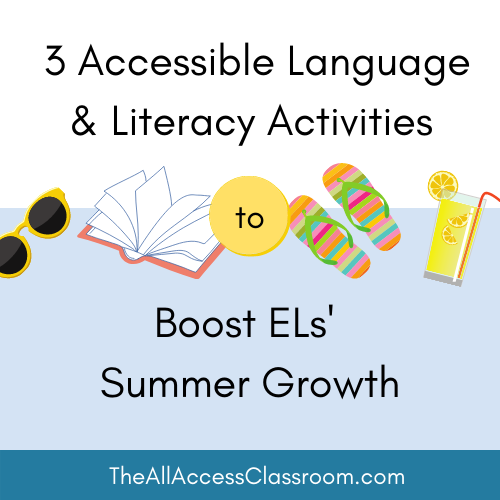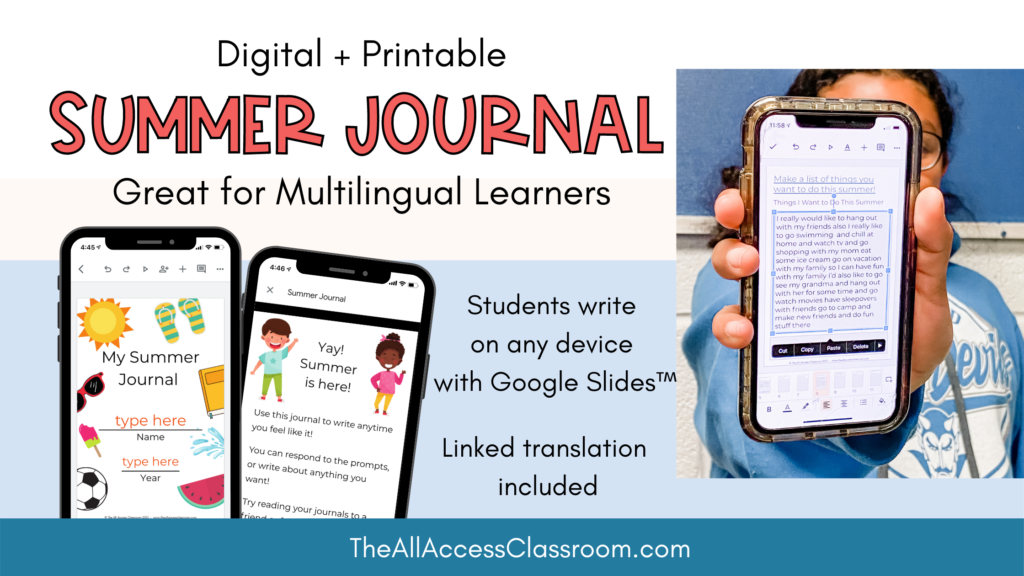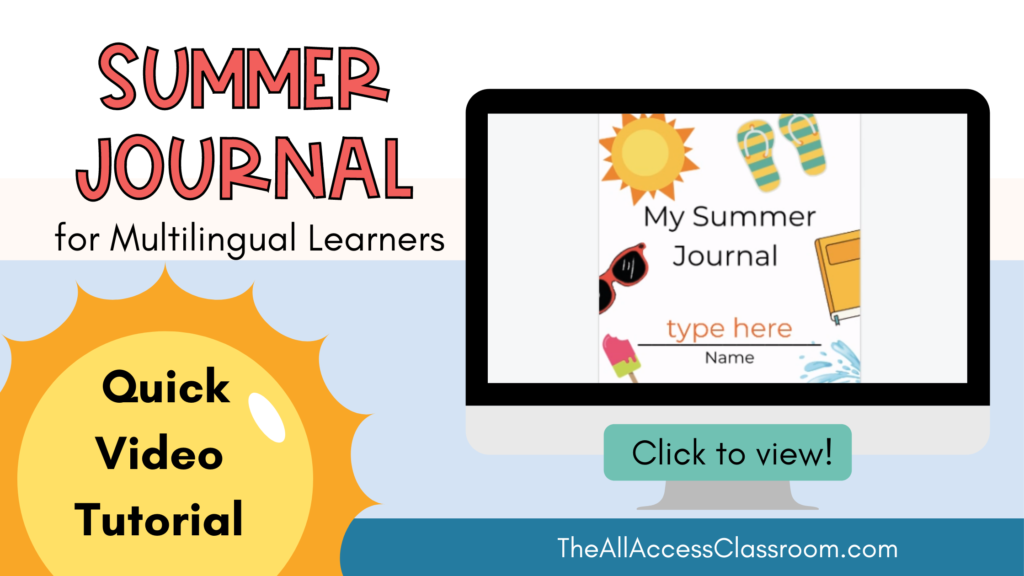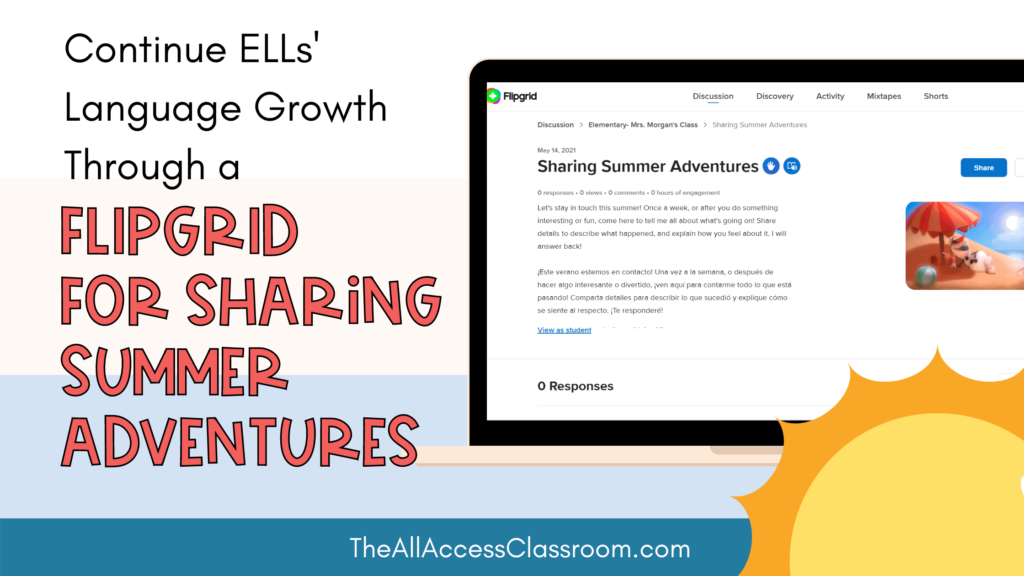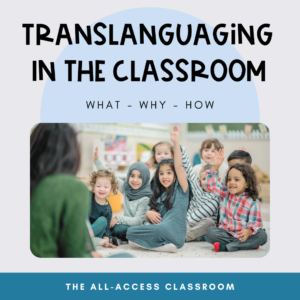We work so hard during the school to provide language and literacy activities that support our English learners. But when they leave for the summer, we suddenly begin to worry:
“Will they ‘lose’ a lot of what they’ve learned this year?”
“Do they have internet or literacy resources at home, so that they can keep practicing reading and writing?”
“Will they have any contact with English language speech or text over the summer?”
Indeed, concerns about the “summer slide,” (learning loss over the long break from school) are valid. Researcher and author Diane Staehr Fenn states that “While summer slide is an issue for many students, students from low-income homes who don’t often have access to the same academically focused summer camps and programs as their higher-income peers tend to slide further behind academically during the summer.”
This may be especially difficult for you as a teacher. You have built relationships with these students, and may know the unique challenges they face when they are not in school. You’d like to set them up for success next school year. You need some language and literacy activities to send your students off with, which will provide them the engagement and practice they need to maintain their English skills.
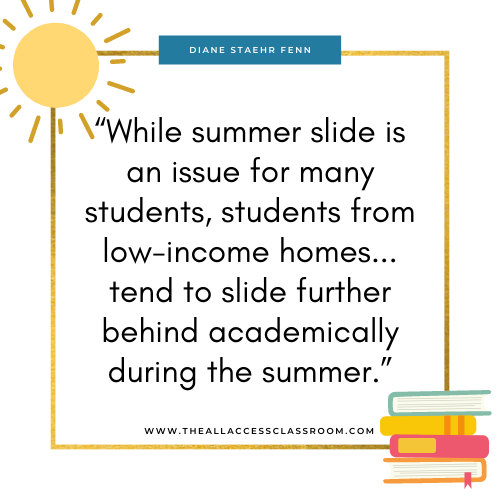
A Few Ideas for Summer Learning for English Learners
There are all kinds of activities out there for summer learning: reading challenges, activity calendars, etc. I wanted to give you a few ideas for summer learning that met some criteria which I feel is important, given the unique needs of our ELs. These are resources that:
- Are either printable, or can be done with as little as a phone app
- Require little preparation by the teacher, and can be sent to families via a texted link
- Can be done independently by the student (You may want to introduce/model some of these activities for the students before the end of the school year.)
- Include features that serve multilingual students and families, and support language learning
I narrowed it down to my favorites! Keeping it simple, here are some EL-appropriate resources and ideas for summer learning!
1. Online resources for literacy practice
If your students do have access to wifi or internet via a device at home, they can check out these websites, which offer literacy practice through free digital books and read-alouds. Some of these sites offer multilingual texts and/or captions.
Getepic.com
An award-winning ebook library, with a wide range of topics and levels, many with read-aloud audio. Some books in other languages. Free for teachers, and Epic is great to keep prices down for families, often offering great limited-time deals. Parents will need to set up an account if using independently at home.
Uniteforliteracy.com
A wonderful ebook library for primary grades, early readers, newcomers, or Spanish-speaking families reading together. This is a good one to share with parents who want to contribute to their child’s reading development. They will be able to read and listen to audio in both English and Spanish.
Childrenslibrary.org
The International Children’s Digital Library offers digital books in many different languages. Most are pdf formatted picture books, with some chapter books. The founding organization “promotes tolerance and respect for diverse cultures by providing access to the best of children’s literature from around the world.”
Storylineonline.net
Created by the Screen Actors Guild (SAG-AFTRA Foundation), this popular website offers recorded picture book read-alouds by well-known actors. The best feature for multilingual learners is that the stories are presented as YouTube videos, so students can view subtitles in many languages.
Oxford Owl Free Ebook Library
Created to help children aged 3–11 to develop their reading skills at home, Oxford Owl offers fiction and non-fiction ebooks, many with read-aloud audio. The texts offered are amazing, but there are a few disclaimers. All texts are read aloud by British readers, parents will need to register for a free account, and the site may be tricky for some parents to navigate. It needed to be shared, though, because of the quality of the texts available for reading at home!
I was pretty particular in which resources made this list. These literacy practice sites are fairly simple for families to access, and ad-free! I hope you enjoy!
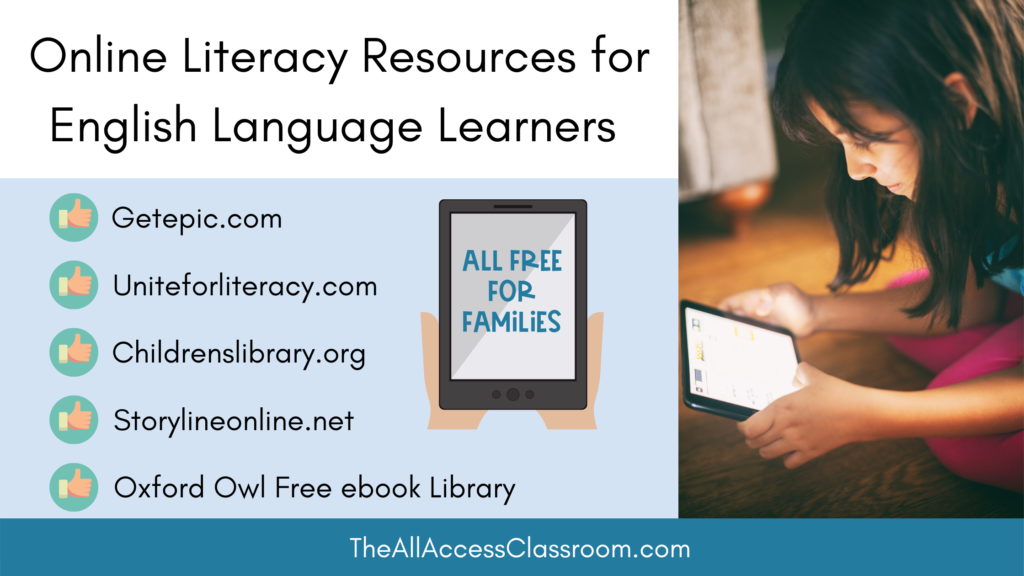
2. Digital or printable summer journal kids can write in throughout the break
It’s important to remember that our English learners need more than reading and listening practice alone. Robust language growth will only come if they have frequent opportunities to speak and write in English, as well. Summer break doesn’t have to be void of these!
The challenge for many ELs is that they need some unique supports in these areas, which the average summer activity sheet doesn’t provide. If we can give a bit of scaffolding to guide and prompt students, they can have access to (and enjoy!) the activities we send.
With a summer journal kids can reflect on and share their personal experiences through writing. With a digital journal, they can also share orally via audio files!
So…I couldn’t find a summer journal resource exactly like what I need… So I made one! And I’d like to give it to you as a gift, a token of appreciation for all that you have done to support your kiddos this year! Yaaayyy!
This summer journal resource is:
-digital (can be completed on any device that can access Google Slides, including a phone!)
-can be printed
-includes writing prompts
-has pre-set links to Google translate
-includes some blank journal pages you can edit
-can allow students to post audio recordings of them reading their entries
-provides space for a teacher to respond (optional) via text or audio file
Here’s a quick video tutorial to give you a better picture of what the journal is like:
Click here to get your free summer journal!
3. Keep Open a Flipgrid for students to report summer happenings
Flipgrid is such a fun platform to get kids talking, and a huge asset to teachers of English learners. If you haven’t used Flipgrid yet, check it out here! It is so easy to use, and for students who are really needing connection during the summer months, it may even be a social-emotional lifeline.
For our purposes, let’s say you have an account, and set up a “topic” called “Sharing Summer Adventures.” Students can record video of themselves talking about events, and you can respond back the same way, if you’d like. You have the option in Flipgrid to turn on a setting to keep videos posted only viewable by you as the teacher. There are many ways you could utilize this resource to stay in touch with your students or provide quick learning opportunities.
A bonus is that Flipgrid integrates Immersive Reader, which will translate any text given to explain the purpose/use of the Flipgrid.
Be sure to familiarize students with the Flipgrid before the last day of school, and make sure they are clear on how to use it over the summer.
Finishing Strong, Keeping the Learning Going
Each of these language and literacy activities provides your ELs with opportunities to interact with English speech and text. Studies show that even if they can read a handful of books over the summer, the degree of “learning loss” may be significantly decreased. So don’t let them go without some go-to learning tools!
A few final tips:
-Make sure families know what resources are available in your local community, especially for access to books (i.e. Public Library, local programs)
-If you have an account with Reading A-Z, print off some books to send home with your students the last week of school.
-Use the Talking Points app to periodically send out links to YouTube read-aloud videos, little mini-challenges to encourage reading/writing practice, or just to stay in touch!
Some related posts:
End of Year Test Prep: 7 Ideas for Review Games and Activities that Engage English Learners
Summer Slide and ELLs: What You Need to Know (Colorin Colorado)
The Best Resources on the Summer Slide (Larry Ferlazzo)
Don’t forget to download your free summer journal that your whole class can use!
I hope you find these recommended summer language and literacy activities helpful! Let’s send off our students with a little boost toward academic success!


